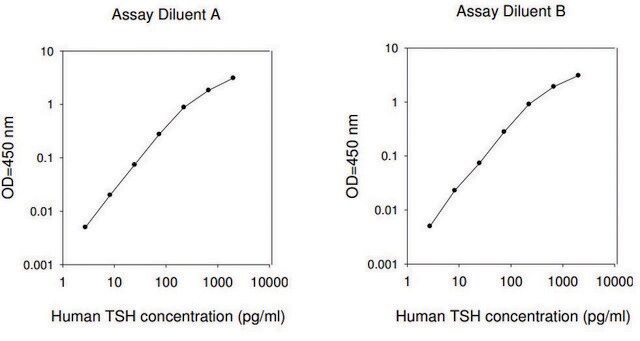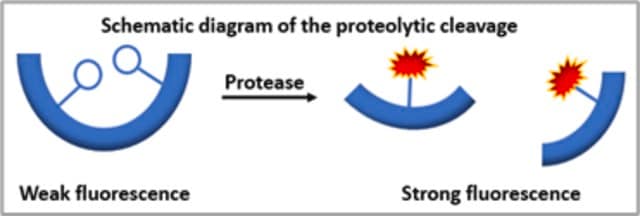CHP2NC
Imprint® Ultra Chromatin Immunoprecipitation Kit, Without Controls
ChIP kit for maximum sensitivity, compatible with Next-Gen sequencing
About This Item
Polecane produkty
Opis ogólny
Zastosowanie
- Suitable for downstream applications
- Individual target characterization to genome-wide profiling techniques
- Characterization of signal transduction pathways
- Verification of ChIp-chIP and ChIP-seq data
Cechy i korzyści
- Use successfully CHiP′ed DNA associated with low abundance, medium, and highly expressed transcription factors, as well as histone modifications
- Greater capacity - can be used over a wide range of cell numbers ranging from 2-10 × 106
- Maximum sensitivity - capable of detecting low abundance transcription factors with as little as 2 × 106 cells
- Employs DNA-Blocked "Staph-Seq" for IP (immunoprecipitation), minimizing contaminating Staph A DNA in downstream ChIP-Seq applications.
Informacje prawne
Tylko elementy zestawu
- Sodium dodecyl sulfate solution, for molecular biology, 10% in 18 megohm water
- Monoclonal Anti-POLR2A antibody produced in mouse, clone 1F17, purified immunoglobulin, buffered aqueous solution
Elementy zestawu są też dostępne oddzielnie
- S6576ChIP Next Gen Seq Sepharose™Karta charakterystyki
- I8896IGEPAL® CA-630, for molecular biologyKarta charakterystyki
- S5150Sodium chloride solution, 5 M in H2O, BioReagent, for molecular biology, suitable for cell cultureKarta charakterystyki
- W4502Water, Nuclease-Free Water, for Molecular BiologyKarta charakterystyki
- I5006IgG from rabbit serum, reagent grade, ≥95% (SDS-PAGE), essentially salt-free, lyophilized powderKarta charakterystyki
- I5381IgG from mouse serum, reagent grade, ≥95% (SDS-PAGE), lyophilized powderKarta charakterystyki
- A7638Bovine Serum Albumin, lyophilized powder, essentially globulin free, ≥99% (agarose gel electrophoresis)Karta charakterystyki
- A84564-(2-Aminoethyl)benzenesulfonyl fluoride hydrochloride, ≥97.0% (HPLC)Karta charakterystyki
- D9156Deoxyribonucleic acid, single stranded from salmon testes, For hybridizationKarta charakterystyki
- M7023Anti-Mouse IgG (whole molecule) antibody produced in rabbit, IgG fraction of antiserum, buffered aqueous solutionKarta charakterystyki
- P8340Protease Inhibitor Cocktail, for use with mammalian cell and tissue extracts, DMSO solutionKarta charakterystyki
- R4642Ribonuclease A from bovine pancreas, (Solution of 50% glycerol, 10mM Tris-HCL pH 8.0)Karta charakterystyki
Hasło ostrzegawcze
Danger
Zwroty wskazujące rodzaj zagrożenia
Zwroty wskazujące środki ostrożności
Klasyfikacja zagrożeń
Acute Tox. 4 Oral - Aquatic Acute 1 - Aquatic Chronic 1 - Eye Dam. 1 - Flam. Liq. 3 - Met. Corr. 1 - Ox. Liq. 1 - Resp. Sens. 1 - Skin Corr. 1B - STOT SE 3
Organy docelowe
Central nervous system
Kod klasy składowania
5.1A - Strongly oxidizing hazardous materials
Certyfikaty analizy (CoA)
Poszukaj Certyfikaty analizy (CoA), wpisując numer partii/serii produktów. Numery serii i partii można znaleźć na etykiecie produktu po słowach „seria” lub „partia”.
Masz już ten produkt?
Dokumenty związane z niedawno zakupionymi produktami zostały zamieszczone w Bibliotece dokumentów.
Protokoły
Chromatin Immunoprecipitation qPCR for studying gene regulation across conditions.
Immunoprecypitacja chromatyny qPCR do badania regulacji genów w różnych warunkach.
Powiązane treści
Protein and nucleic acid interaction reagents and resources for investing protein-RNA, protein-DNA, and protein-protein interactions and associated applications.
Odczynniki do interakcji białek i kwasów nukleinowych oraz zasoby do badania interakcji białko-RNA, białko-DNA i białko-białko oraz powiązanych zastosowań.
Nasz zespół naukowców ma doświadczenie we wszystkich obszarach badań, w tym w naukach przyrodniczych, materiałoznawstwie, syntezie chemicznej, chromatografii, analityce i wielu innych dziedzinach.
Skontaktuj się z zespołem ds. pomocy technicznej














